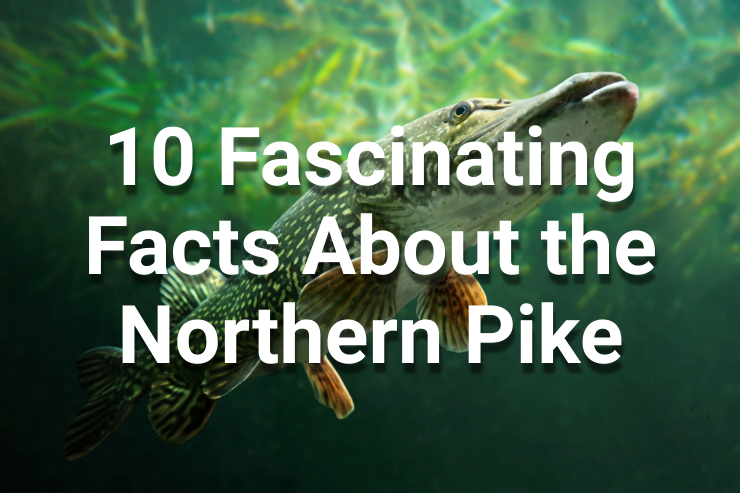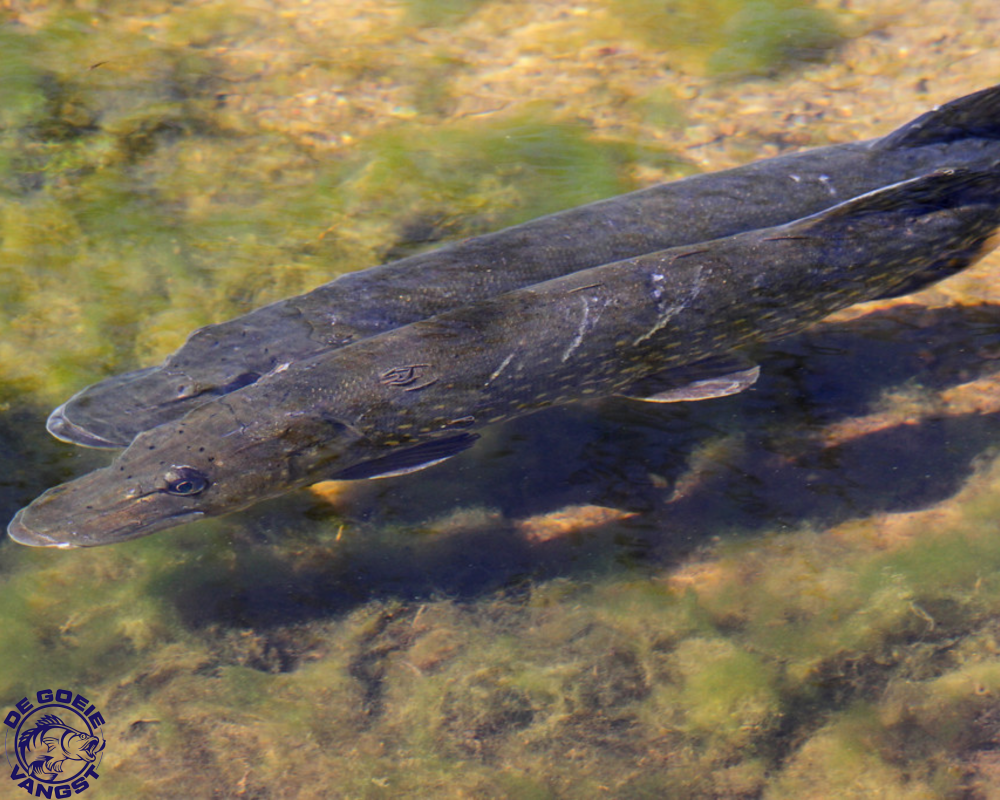10 Fascinating Facts About the Northern Pike
The Pike, also known as Esox Lucius, is an impressive fish that can be encountered in the rivers and lakes of the Benelux and beyond. Here are ten fun facts about this special fish:

1. SCIENTIFIC CLASSIFICATION
The Pike (Northern Pike) belongs to the family Esocidae. This fish species is distinguished by its light spots and the rounded ends of the caudal fin, distinguishing it from the Muskellunge or American Pike.
2. LIFE
In the wild, Pike can reach an impressive age of 15 to 25 years. In captivity, their lifespan is shorter, averaging between 7 and 10 years.
3. PHYSICAL FEATURES
The Pike is known for its distinctive physical characteristics. Below is a summary of its main characteristics:
| Feature | Male | Female |
|---|---|---|
| Average Length | 28 to 68 cm | 48 to 76 cm |
| Maturity | Within 4 to 5 years | Within 5 to 6 years |
| Average Weight | 2.3 to 4.5 kg | 2.3 to 4.5 kg |
| Maximum Length | Up to about 85 cm | Can reach 1.40 metres |
These differences in size and growth rate between male and female pike highlight their unique biological characteristics. Females tend to grow larger than males, a pattern often observed in many fish species.
4. SWIMMINGNESS
Pike are known for their impressive speed in the water, especially when hunting. Here are some details about their swimming behaviour:
- Normal Swimming Speed: Pike typically move through the water at speeds of 12 to 16 km/h.
- Hunting strategy: These fish specialise in ambush hunting. They approach their prey quietly and unobtrusively.
- Acceleration: When prey comes within range, pike can suddenly accelerate up to 40 km/h. This explosive speed is used to surprise and efficiently capture unsuspecting prey.
This combination of patience and speed makes the pike an effective and fascinating predatory fish.
5. PREPARATION
The reproductive period takes place in early spring, usually around March and April. The eggs hatch within a period of one to four weeks. They choose shallow, vegetation-rich areas to lay their eggs.

6. HABITAT
The Pike prefers cool water and is often found in slow-flowing rivers and vegetation-rich lakes and bays.
7. FOOD
A carnivorous fish, Pike feed on other fish, but their diet also includes amphibians, waterfowl, snakes and sometimes small mammals. They hunt by striking from ambush.
8. Bait & Lures
Effective baits and lures for catching Pike include spoons, crankbaits, spinnerbaits, topwater lures and live baits such as windes or roach.
9. EXTERNAL FEATURES
Pike have a long, slender body with a large mouth full of sharp teeth, ideal for predatory behaviour. Their back is dark olive green with a cream-coloured belly and prominent yellow to white spots on the flanks.

10. CATCH-AND-RELEASE AND RESPECT FOR PIKE
Although Pike meat is renowned for its flavour, in many regions, including the Benelux, it is not allowed to take these fish. This is due to the emphasis on conserving the pike population and respecting their role in the ecosystem. The practice of catch-and-release is strongly encouraged, meaning that after catching a pike, fishermen treat it with care and respect and then release it back into its natural habitat. This helps maintain a healthy pike population and ensures a sustainable fishing experience for future generations.
Bonus fact
The record catch of a Northern Pike in the Benelux is an impressive 138 cm, caught in 2019. This catch shows the impressive size these fish can achieve in the right conditions.


